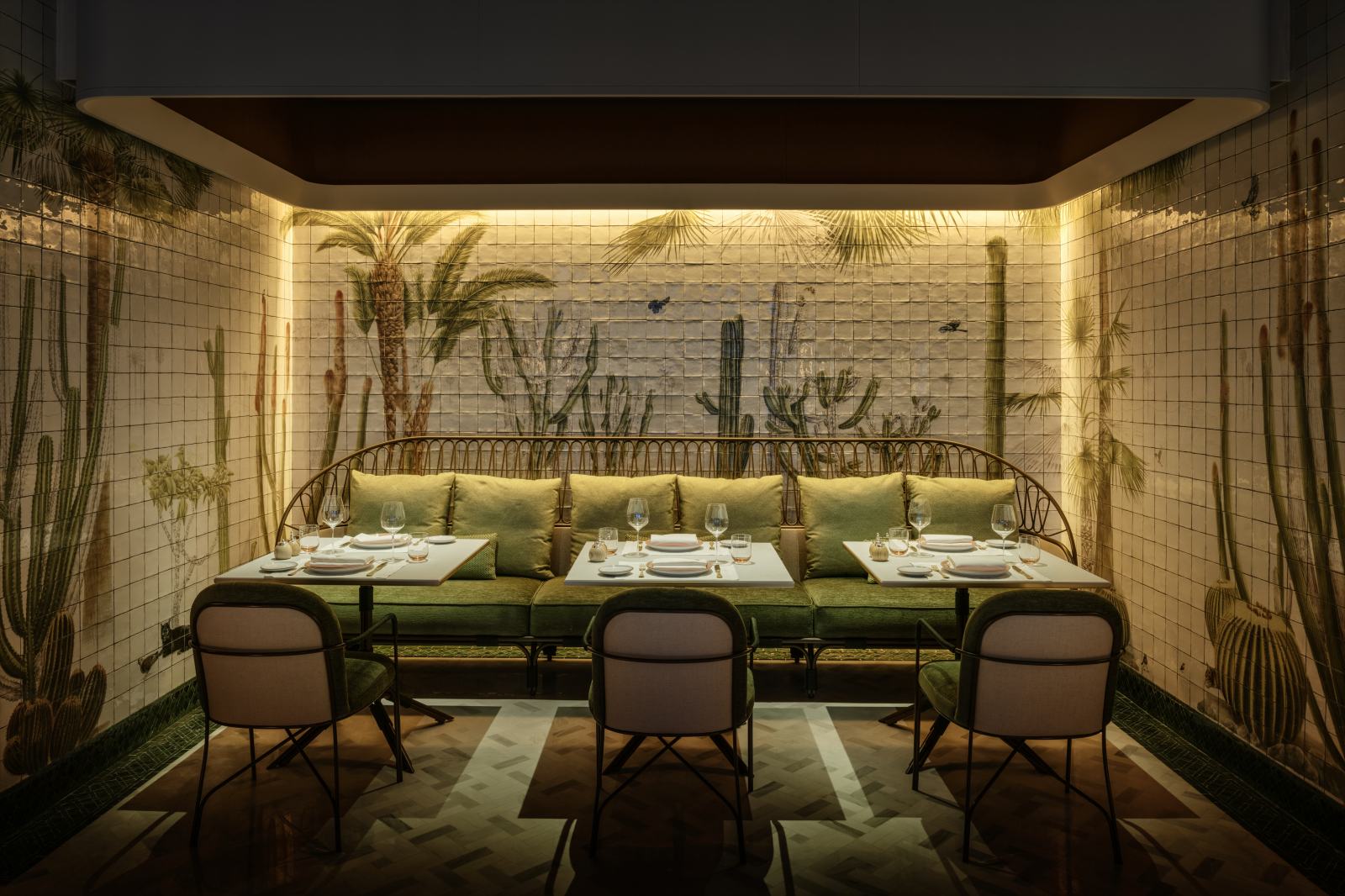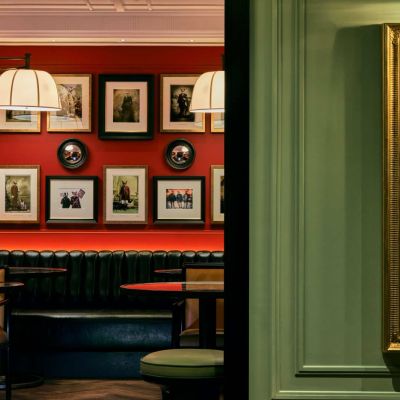The World's Best Hotel Turns 100

Approaching its centenary, La Mamounia is reconnecting with its roots through modern design.

Steeped in history, somewhat mysterious and a little exotic, the La Mamounia hotel in Marrakech, Morocco, has been the perfect destination for adventurous creatives and celebrities alike since its opening in 1923. With a timeless legacy, it has been voted world's best hotel a number of times, most recently in 2021 when it was given the accolade by Condé Nast Traveller.
Originally the three-hectare orchard was given by Alaouite Sultan Mohammed Ben Abdallah to his son as a wedding gift, who later transformed the orchard to host outstanding garden parties. Two centuries later, the Moroccan Railway Company chose to build a hotel on the exceptional grounds. French architects Henri Prost and Antoine Marchisio were asked to combine Moroccan architecture and Art Deco inspirations. La Mamounia would be a unique building where traditional zellij tiles and Berber tapestries would mingle with Art Deco furniture.

Overnight, the palace’s style was sought after by the finest minds, starting with Winston Churchill who took up residence in winter to revitalise himself. French painter Jacques Majorelle took part in the 1946 renovations, 20 years before Pierre Bergé and Yves Saint Laurent moved to Marrakech in 1966, choosing to settle at La Mamounia before acquiring their secondary residence (and having Majorelle design their gardens).
Today, as the palace approaches its 100th anniversary, a thoughtful rejuvenation is under way, envisioned by Paris-based designer Patrick Jouin and architect Sanjit Manku. When Alsatian Pierre Jochem, La Mamounia’s managing director, called them with a ‘small’ project to redesign the Churchill Bar and imagine a wine cellar they came to visit. All they could remember afterwards was being “both scared and drawn to” La Mamounia.

“After visiting the grounds, we were impressed by the atmosphere and the artisan savoir-faire displayed around the palace. But it was clear to us that adding a wine cellar would not be a solution: the whole dynamics of the ground floor needed to be rethought,” they said.
One of their conclusions was that there was very little left of the Art Deco heritage after Jacques Garcia renovated the palace in 2006. Furthermore, even though La Mamounia had thrived on being a social mecca, all the great energy emanating from the different restaurants was concentrated in one area, while an axis of calm prevailed on the other side. The bar was simply left aside as a lone island.

It wasn’t long before Jochem embraced the duo’s vision to rebalance the ground-floor layout to bring new spaces, harmony and flow. A greater complex for food and beverages was designed in collaboration with noted chefs: a tea lounge was imagined by Pierre Hermé and a pan-Asian restaurant overseen by Jean-Georges Vongerichten. A cinema was also added to the project. All the new spaces were designed by Jouin and Manku with great attention to detail, made-to-measure artisanal work, furniture, rich fabrics and expert lighting (fine-tuned by Stéphane Carratero). Finally, a wine cellar and wine-tasting rooms were brought back to the centre of the project.
After working on the overall flow, there came the need to convey a new style and atmosphere. “If you want to undertake a quiet ‘stylistic revolution’, one way is to use light to instigate the marvellous in a contemporary way,” explains Jouin, who designed many different lights, chandeliers and lanterns to add modern-day magic to La Mamounia. “We reinterpreted traditional Moroccan motifs and techniques and brought them into this century. In the main alleys, for example, we designed a minimal lamp: inspired by a traditional Moroccan lamp: it is covered with an off-white lampshade. Graphic and feminine, it hints at the purity of the Art Deco legacy,” Jouin explains. Using warm sources of light and lanterns he redesigned in countless ways, intricate metal works, elegant textiles and ceramics, the designer delved into Moroccan traditions to give a contemporary edge.

A stunning addition to the main aisle leading to the pool, a monumental chandelier engineered by Lasvit comes cascading down in geometric forms: sculpted using different textures of glass (smooth, clear-rippled, opaque), the square-shaped elements create a magnetic visual flow, and a natural transition with the modern fountain below. The eye is hypnotised by this architectural feature that revitalises the historic setting without weighing on it; as one looks up, the richly decorated Moroccan ceiling lies there intact, a testament to timeless master craftsmanship.
La Mamounia is all about honouring the past and touching on Churchill’s legacy was an important next step: while the former bar welcomed leopard carpets and textiles, Jouin took a more radical, modern approach. First, the walls were covered with backlit textiles and wood panelling. In the centre, a horseshoe-shaped bar in black marble comes as a sculptural masterpiece. Equally dark, smoked oak flooring bring the space the allure of a chic train wagon from the 1920s. With two private alcoves and a sumptuous backlit bar, it would have made Churchill proud.

At La Mamounia, myths are alive.









